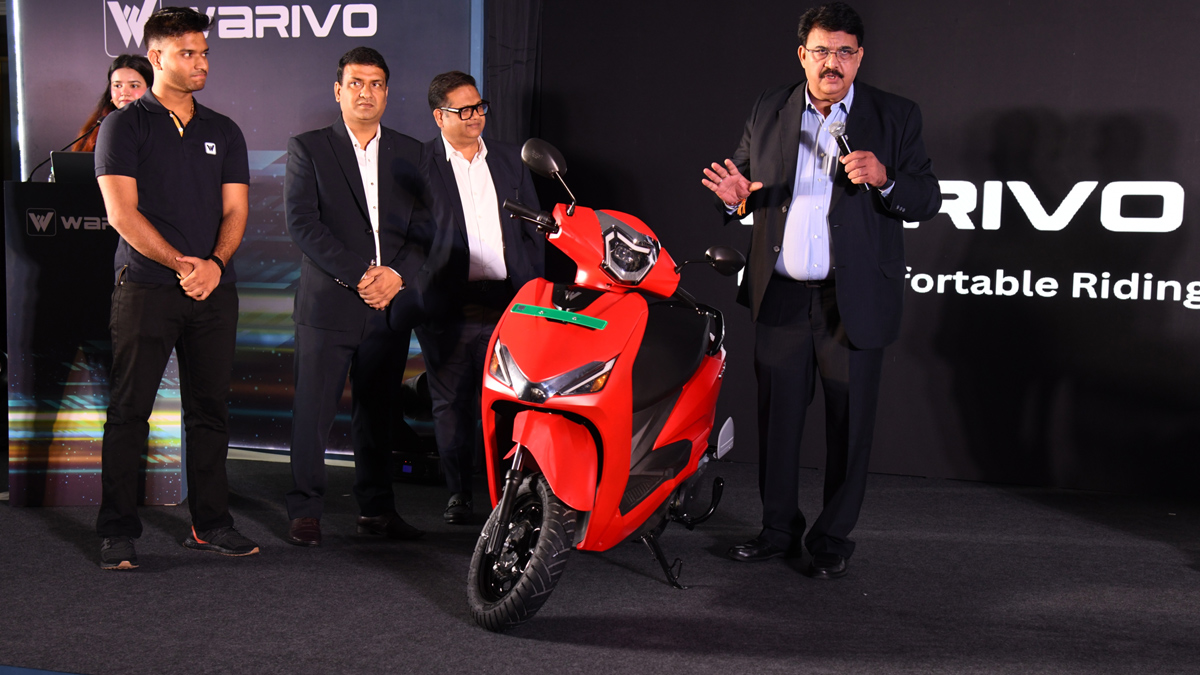You ain’t seen nothing yet. Shammi Sharma, CEO of Gurugram-based electric scooter maker Warivo did not exactly say as much, but that was probably what he had in mind as he announced the launch of the company’s latest model, the high-speed CRX. It also encapsulates the ongoing trend in this nascent, but full-of-action, two-wheeler space, whereby conventional players are weighing in on their heft, but the dark horses are the innovative startups.
Of course, action is all in the e-scooter scene in the country no doubt, right from the government’s new PM e-drive scheme being announced to replace the earlier FAME incentives, to the headline-grabbing incident of an irate buyer setting an Ola Electric showroom on fire.
ALSO READ | India’s electric vehicle revolution is seeing its thunder stolen by an unlikely suspect
Late to the party but landing up with their flexing muscles into the e-scooter party has been the biggies of the traditional internal combustion engine (ICE) two-wheeler space — Bajaj already has more than an e-Chetak in the market while old-timer Kinetic is looking at both e-mopeds like e-Luna and e-Zulu as well as three-wheelers.
Keeping it simple and affordable, the Warivo CRX gets a fully-digital instrument cluster and has the provision for both USB and C-type charger option on board. pic.twitter.com/PfJokmBZWl
— Acko Drive (@AckoDrive) September 13, 2024
ALSO READ | Kinetic makes a comeback, doubles down on electric three-wheelers
While the Japanese players have always been a bit reluctant about the electric two-wheeler space, Honda has already announced that it will launch an electric scooter early next year.
However, Sharma would like to believe that fortune favours the brave — that the upstart startups do have an advantage in the electric mobility space, being nimbler and quicker to innovate. Even while talking of competitors, it is interesting to note that the names he talks about are not the traditional two-wheeler giants like a Hero or a Bajaj, but new players like Ather and Ola.
“We have created a product that speaks to the contemporary Indian commuter,” said Singh, adding that the new model launched on Friday, Warivo CRX, is “designed to resonate with all customers, truly living up to the promise of being everyone’s ride.”
The ‘high speed’ (max speed is only 55km, but apparently that satisfied govt norms for an electric vehicle to be called ‘high speed) bike can go up to 90km on one charge, which its non-removable LFP battery takes anywhere from 5 hours to 7 hours to get fully charged. The bike is water and fireproof, and has what the makers claim is a ‘blast-proof battery’. Warivo director Rajeev Goel called it “a solution for present-day climate needs and mobility challenges.”
Will the CRX and similar startup e-scooters cocking a snook at the traditional two-wheeler players, who anyway believe they will have the last laughs, the stage is set for an exciting gallop as India’s electric mobility sector rounds the bend.



